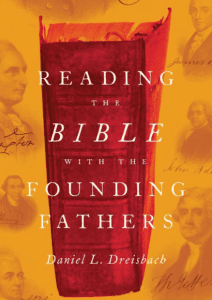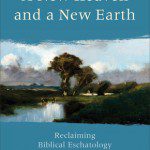One of the major points of Peter Enns’s new book The Evolution of Adam: What the Bible Does and Doesn’t Say about Human Origins, perhaps the major point, is that the Old Testament points toward Christ. The form this takes, however, is not exactly the traditional evangelical understanding and we would do well to rethink the form and purpose of the Old Testament.
 The second chapter of The Evolution of Adam addresses the question of when and why Genesis, the Pentateuch, and indeed the entire Old Testament, was collected, written, edited, and shaped into the form we have today. This is a question that does not get enough serious thought in the church. The Old Testament is the foundation for the story of Jesus in the New Testament. God’s work in the world is rooted in time, place, and people and extends back in time. The image to the right (taken from wikipedia) is of a silver scroll dated to sometime around 600 BCE. This scroll has phrases from the Pentateuch, in particularly the Priestly Blessing of Numbers 6:24-26, inscribed upon it. As I understand it, this is one of the oldest existing fragments of the biblical text. It is on display in the Israel Museum in Jerusalem, where I saw it and first learned of its existence. This scroll and a second found at the same time predate the destruction of Jerusalem at the hands of the Babylonians in 587 or 586 BCE.
The second chapter of The Evolution of Adam addresses the question of when and why Genesis, the Pentateuch, and indeed the entire Old Testament, was collected, written, edited, and shaped into the form we have today. This is a question that does not get enough serious thought in the church. The Old Testament is the foundation for the story of Jesus in the New Testament. God’s work in the world is rooted in time, place, and people and extends back in time. The image to the right (taken from wikipedia) is of a silver scroll dated to sometime around 600 BCE. This scroll has phrases from the Pentateuch, in particularly the Priestly Blessing of Numbers 6:24-26, inscribed upon it. As I understand it, this is one of the oldest existing fragments of the biblical text. It is on display in the Israel Museum in Jerusalem, where I saw it and first learned of its existence. This scroll and a second found at the same time predate the destruction of Jerusalem at the hands of the Babylonians in 587 or 586 BCE.
There were certainly sources and even holy texts that predate the exile, and the scroll pictured to the right makes this clear. But the Old Testament as we have it is more than a collection of texts. It has form and purpose. The argument Enns makes is that the text we have in our Bible was shaped by and complied in response to the exile and the return from exile.
The exile was the most traumatic event in Israel’s ancient national history and was therefore extremely influential on how the Israelites thought of themselves as the people of God. The Israelites understood themselves to be God’s chosen people: they were promised the perpetual possession of the land, the glorious temple as a house of worship, and a son of David perpetually sitting on the throne. With the exile, all of this came to a sudden and devastating end. …
The impact of this series of events cannot be overstated. Since these long-standing ties to Yahweh were no longer available to them, the Israelites turned to the next best thing: bringing the glorious past into their miserable present by means of an official collection of writings. Some of these writings were collected and edited at that time, with additions and thorough updating – like the Pentateuch. Others only came into existence then. Either way, the trauma of exile was a significant factor – if not the driving factor – in the creation of what has come to be known to us as “the Bible.” (p. 27)
What do you think the Old Testament is?
Is it reasonable to view the collected and edited form of the Old Testament as, in large part at least, a response to the experience of the exile?
Enns gives some examples where the reshaping and collection of the text shows the influence of the experience of exile and return from exile. The OT can be summarized something like this:
The Deuteron0mistic History – that is Joshua through 2 Kings – was assembled around the time of the exile. It certainly used earlier written sources and mentions some of these sources in the text we have. This set of books tells the story of Israel from the death of Moses to the exile and release of King Jehoiachin about 561 BCE. The final form of this text is no earlier than the mid 500’s.
The Pentateuch sets up the Deuteronomistic history and was also brought into the final form we have today during the exilic and postexilic period. It also uses older sources, of this there is no real question.
1 and 2 Chronicles, Ezra, Nehemiah, and Esther are clearly post-exilic. Ezra and Nehemiah relate the return from exile and Esther is set in the reign of King Xerxes (486-465 BCE).
The writings have a range of dates and often represent collections of materials from different sources. Some of the material dates back quite a ways – Song of Songs, Job, and Proverbs fall into this category (on Song of Songs Enns suggests that it is best to remain open to an early or late date). The book of Psalms is a collection of some 150 poems, praises, laments, hymns – at least some of which are clearly post-exilic. In fact Enns notes that “the Dead Sea scrolls show that books 4 and 5 of the Psalter were still in considerable flux near the time of Jesus.” (p. 31)
Among the prophets Jeremiah, Ezekiel, and Daniel deal with the exile and subsequent events. Isaiah is a subject of some controversy, but Enns notes that there is “virtually unanimous scholarly consensus” that Isaiah was written over a long stretch of time. The last section, Isaiah 40-66 appears to have been written after the return from exile.
Some of the minor prophets clearly date to the exile or after the exile. The collection of the twelve minor prophets was brought together after the exile – Enns suggests the Persian period, possibly later.
So how does this come together and what does it mean for us as Christians?
First, the Old Testament is a theological document and serves a theological purpose.
It was after the exile that Israel’s sacred collection of books came to be – not out of a dispassionate academic interest on the part of some scribes but as a statement of self-definition of a haggard people who still claimed and yearned for a special relationship with their god. The Bible, including the Pentateuch, tells the old story for contemporary reasons: Who are we? Who is our God? (p. 32)
Second, the theological purpose of the Old Testament was fresh in the minds of first century Jews. It was into this mix that Jesus came when the time was right, as the fulfillment of the Scriptures, as God’s Messiah. The first Christians were first century Jews.
Their view of that same history was shaped by a defining moment – not one of crisis but of good news, the appearance of the kingdom of heaven and the Son of God, crucified and raised. That defining moment shaped how the New Testament writers engaged Israel’s story – better put, it forced a fresh engagement of that story. They believed Jesus to be the focal point of that drama. …
The defining moment for the New Testament writers remains the defining moment for Christians today. The Old Testament – including Genesis – is the church’s theological self-defining document recast in light of the appearance of God’s Son. (p. 33)
For Christians the Old Testament is a fundamentally Christ-centered document. It is rooted in history and in God’s interaction with his people throughout history, but it is focused on the return from exile and the coming of God’s Messiah as fulfilled in the life, death, and resurrection of Jesus Christ. This shaped how first century Christians, including the New Testament writers, viewed scripture and used scripture.
What is the purpose of the Old Testament for the Church?
How does this shape your reading of the text?
If you wish to contact me directly you may do so at rjs4mail[at]att.net.
If interested you can subscribe to a full text feed of my posts at Musings on Science and Theology.











